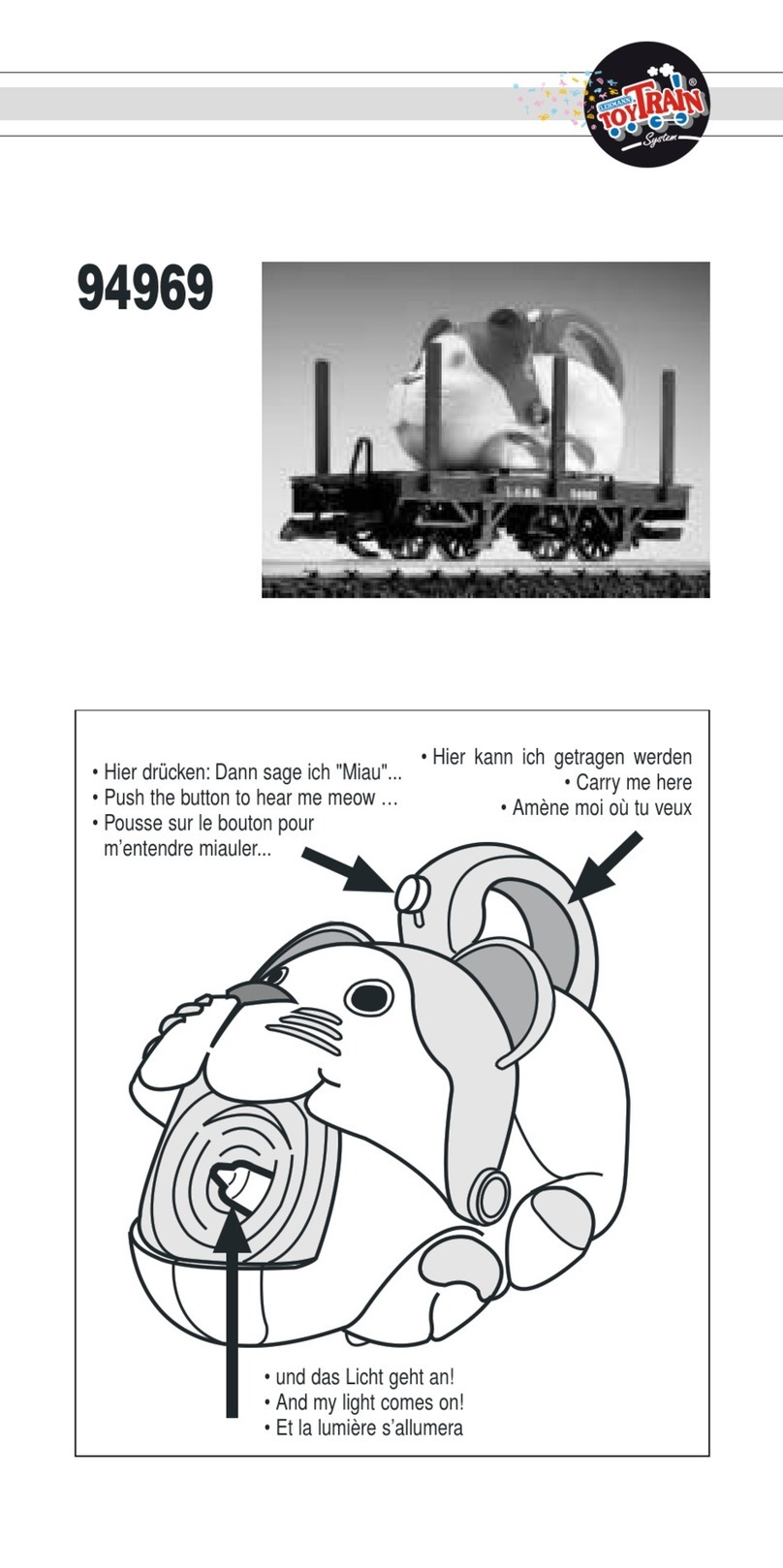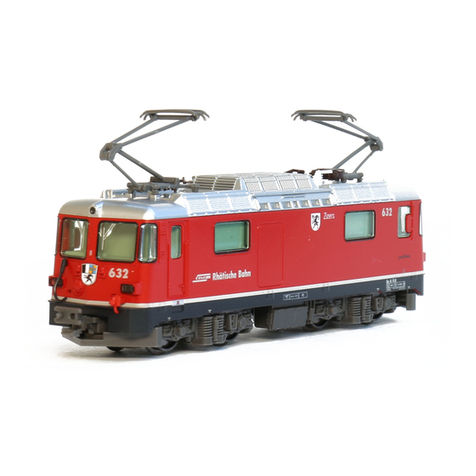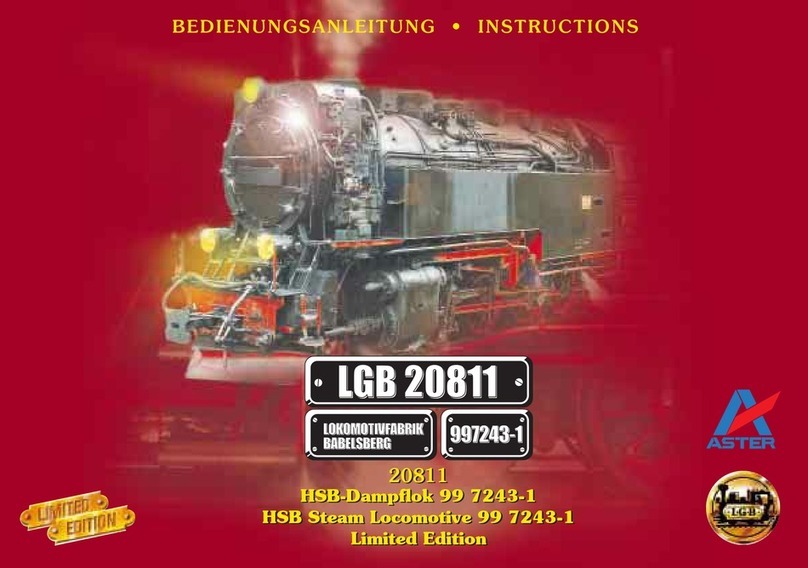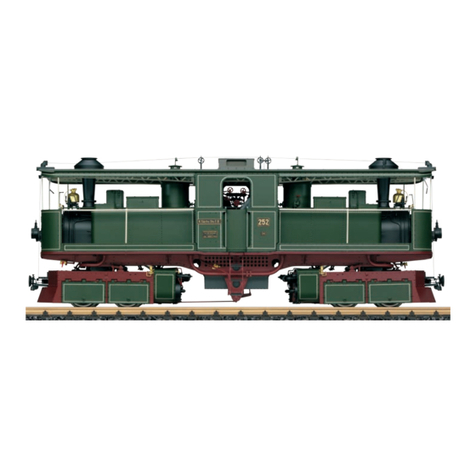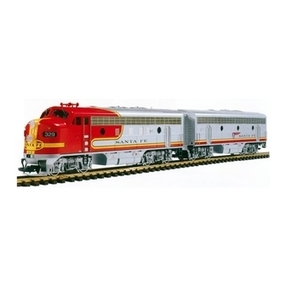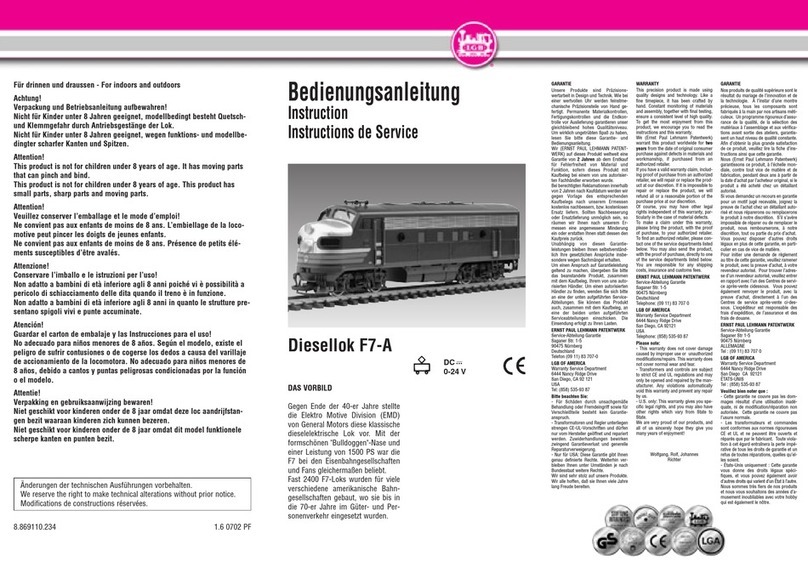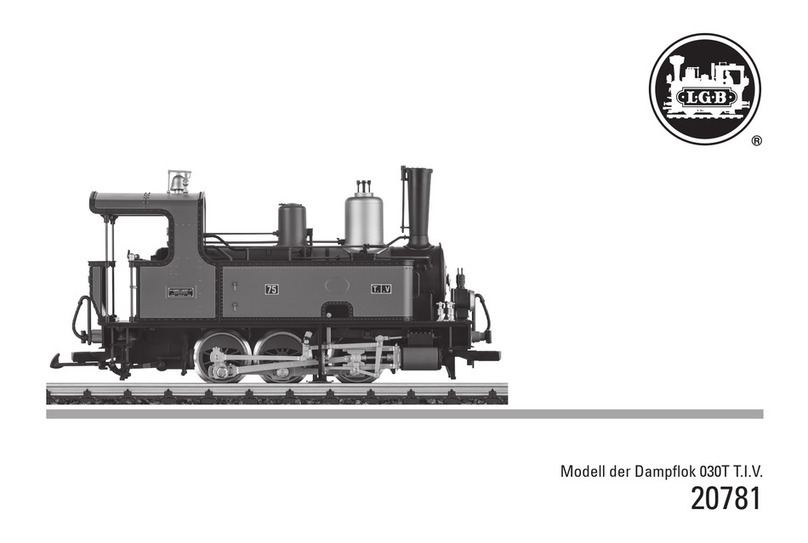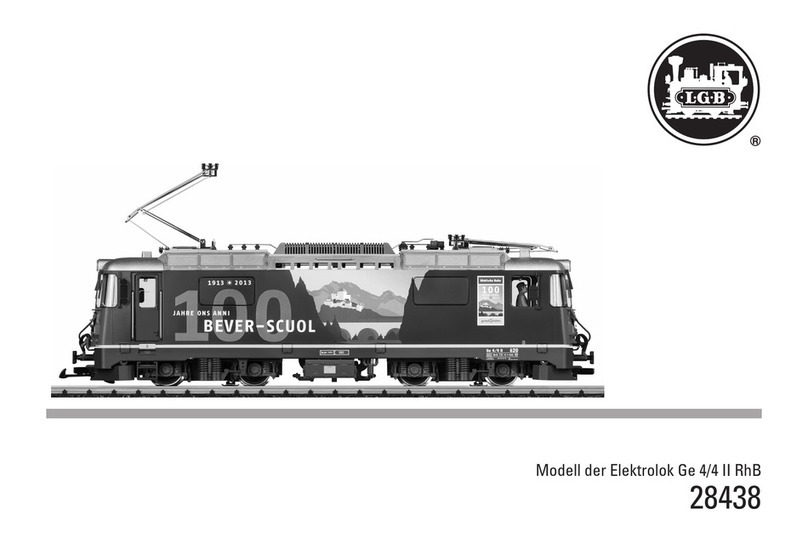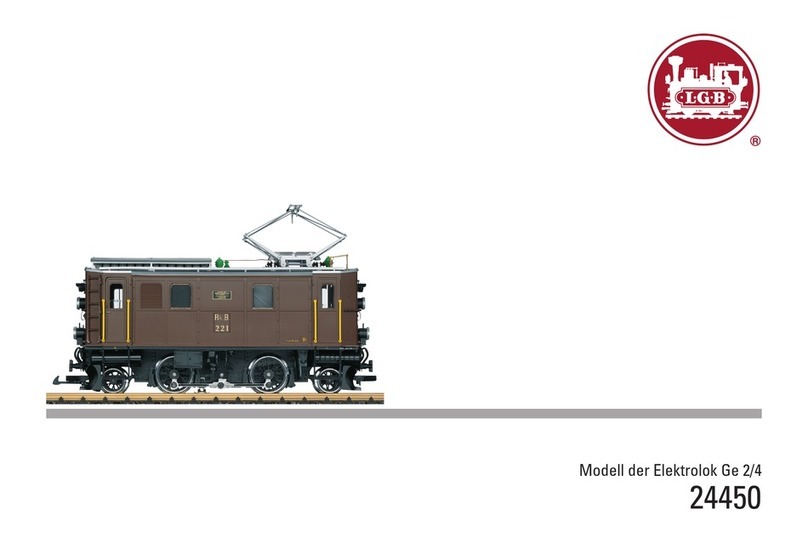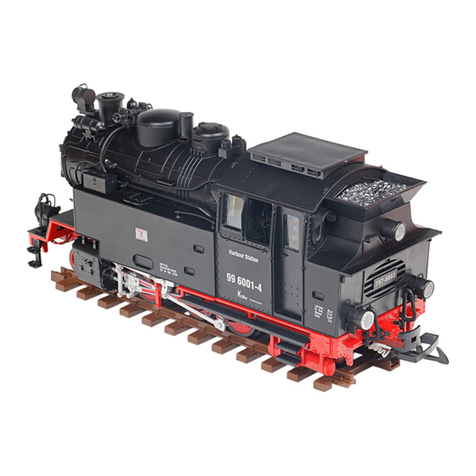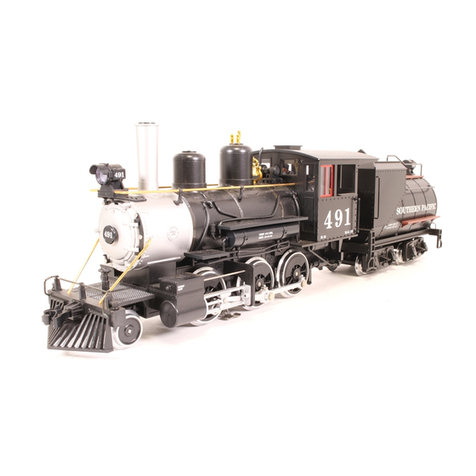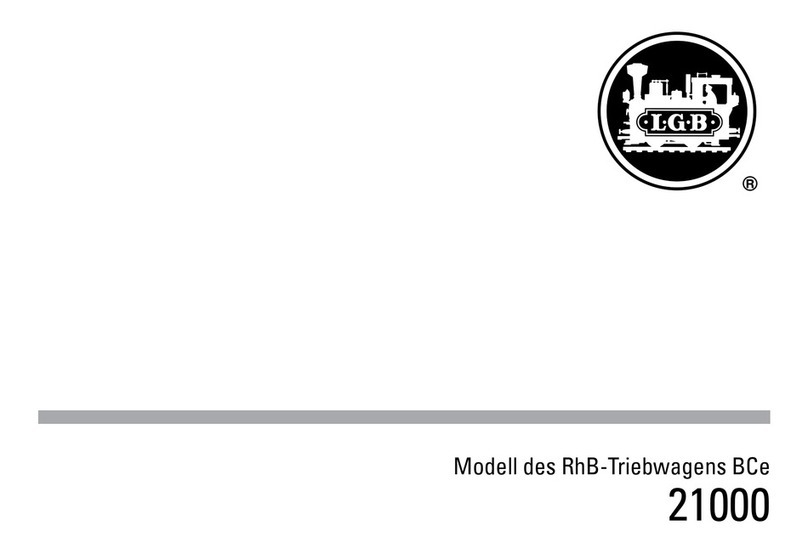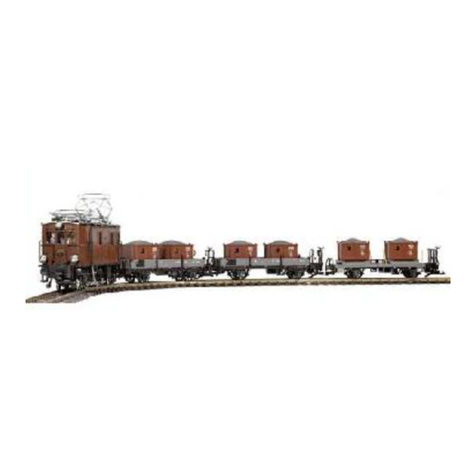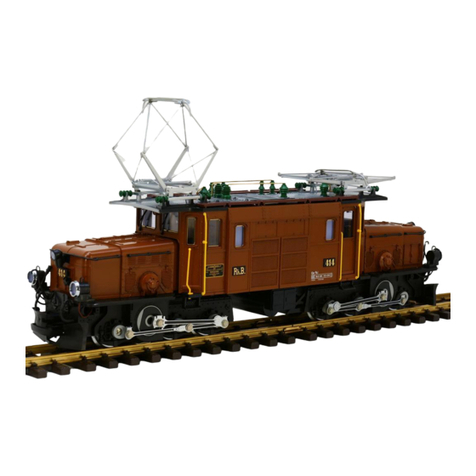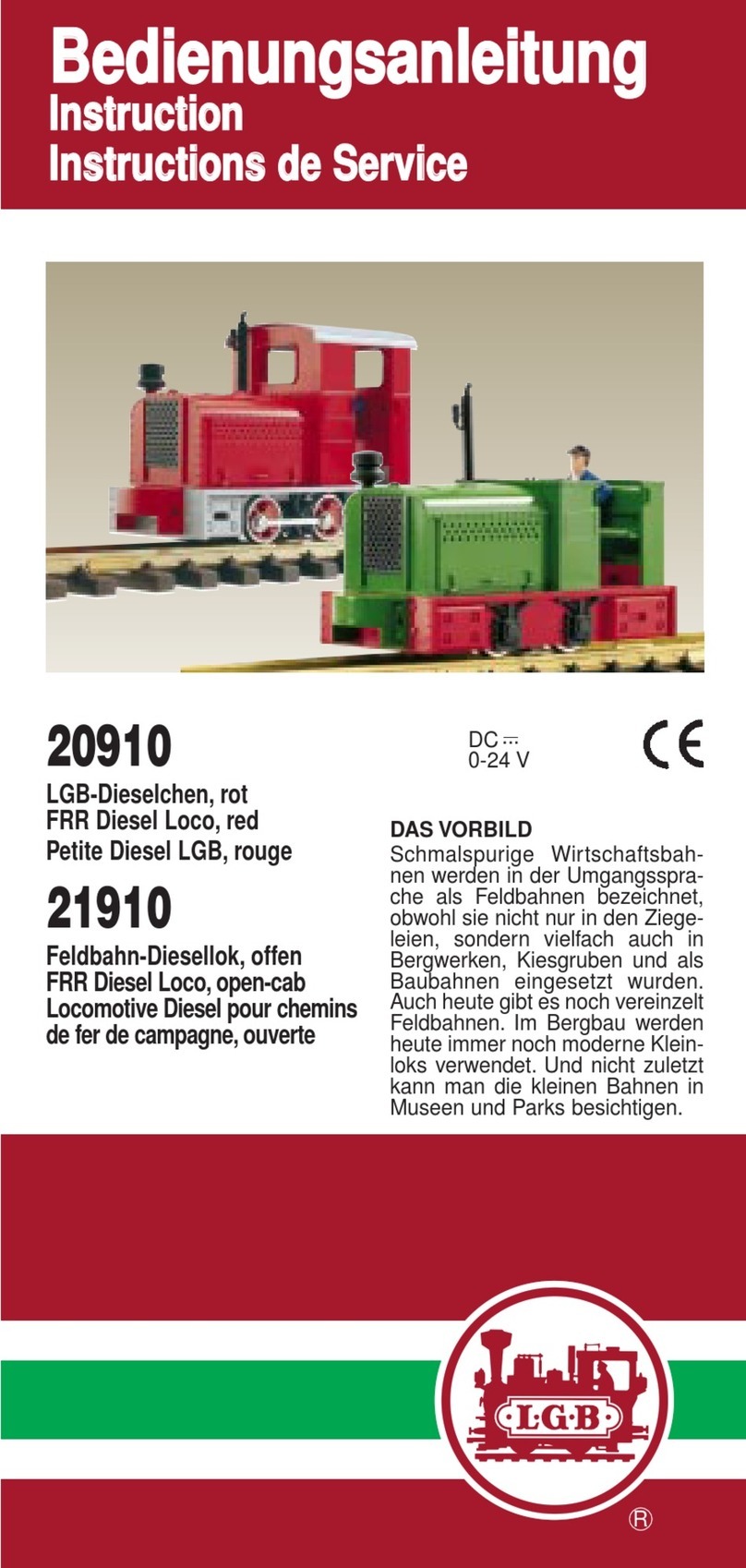10
Safety Notes
• Thismodelmayonlybeusedwiththeoperatingsystemdesignedforit.
• Useonlyswitchedmodepowersupplyunitsandtransformersthataredesigned
for your local power system.
• Thislocomotivemustneverbesuppliedwithpowerfrommorethanonepower
pack.
• Paycloseattentiontothesafetynotesintheinstructionsforyouroperatingsys-
tem.
• Notforchildrenundertheageof15.
• WARNING! Sharp edges and points required for operation.
Important Notes
• Theoperatinginstructionsareacomponentpartoftheproductandmusttherefore
bekeptinasafeplaceaswellasincludedwiththeproduct,ifthelatterisgivento
someone else.
• Thewarrantycardincludedwiththisproductspeciesthewarrantyconditions.
• PleaseseeyourauthorizedLGBdealerforrepairsorspareparts.
• Disposing:www.maerklin.com/en/imprint.html
Functions
• ThismodelisdesignedforoperationonLGBtwo-railDCsystemswithconventio-
nalLGBDCtraincontrollersorpowerpacks(DC,0-24volts).
• Factory-installedmultipleprotocoldecoder(DC,DCC,mfx).
• Themodelisprogrammedwithlocomotiveaddress03forusewiththeLGBMulti
TrainSystem(DCC).Thelocomotiveisautomaticallyrecognizedinoperationwith
mfx.
• Volumecanbechangedforthesoundeffects
• Theoperatingsoundsareoninanalogoperation.
• Thefunctionscanbeactivatedonlyinparallel.Serialactivationofthefunctionsis
notpossible(Pleasenoteheretheinstructionsforyourcontroller).
• Whenpossible,usethelarger“R3“and“R5“curvesinordertoincreasethe
operating reliability and allow prototypical operation.
• Theengineer‘scabwillswingoutquiteabitwhenthelocomotiveisnegotiating
curves. For that reason check the clearance gauge of your layout before you run
this model.
•Astraightsectionoftrackshouldalwaysbeinstalledbeforebridges,stationplat-
forms,ortunnelssothatthelocomotivecanstraightenitselfbeforepassingthese
obstacles.
Mode of Operation Switch
This model has a four-position switch for the mode of operation. It is located in the
engineer‘scab(Figure1&2).
Pos.0 Locomotivestoredonasidingwithoutcurrent
Pos.1 Locomotivemotor,smokeunit,lighting,andsoundturnedon
Pos. 2 Same as Position 1
Pos. 3 Same as Position 1
Smoke Unit
This model is equipped with a smoke unit. Fill the smoke stack only halfway with
smokeuid.Ifyouputintoomuchuid,thesmokeunitcannotproducesmoke.
Important! Do not touch the heating element in the middle of the smoke unit. It is hot
and can break.
Note:Thesmokeunitcanbeoperated“dry“withoutsmokeuid.Whenthetankis
empty,theheatingandthefanwillturnoffafterabout2minutes.
Sound
ThebellandwhistlecanbeactivatedwiththeLGBsoundactivationmagnet(itemno.
17050)thatisincludedwiththelocomotive.Theactivationmagnetcanbeclippedinto
placebetweenthetiesofmostLGBtracksections.Themagnetislocatedontheside
underthecast-inLGBlogo.Placethemagnetontherightsideinordertoactivatethe
whistle when the locomotive passes over this location. The bell will sound when the
magnet is placed on the left side.
Multi-Protocol Operation
Analog Operation
This decoder can also be operated on analog layouts or areas of track that are
analog.Thedecoderrecognizesalternatingcurrent(DC)andautomaticallyadapts
to the analog track voltage. All functions that were set under mfx or DCC for analog
operationareactive(seeDigitalOperation).
Digital Operation
The decoders are multi-protocol decoders. These decoders can be used under the
followingdigitalprotocols:mfxorDCC.
The digital protocol with the most possibilities is the highest order digital protocol.
Thesequenceofdigitalprotocolsindescendingorderis:
Priority1:mfx;Priority2:DCC;Priority3:DC
Note:Digitalprotocolscaninuenceeachother.Fortrouble-freeoperation,were-
commend deactivating those digital protocols not needed by using CV 50. Deactivate
unneeded digital protocols at this CV if your controller supports this function.
Iftwoormoredigitalprotocolsarerecognizedinthetrack,thedecoderautomatically






